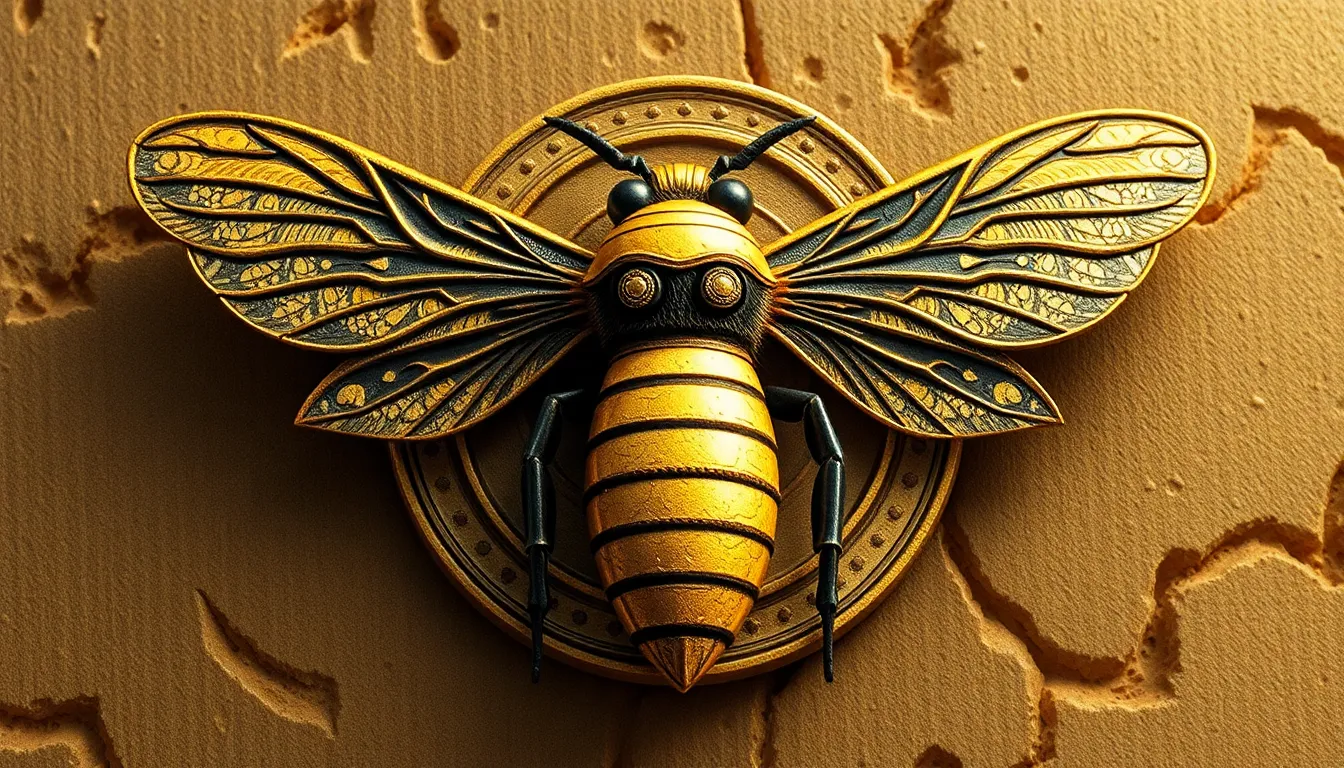The Legend of the Sacred Bee: Symbolism and Significance in Ancient Egypt
I. Introduction
The Sacred Bee holds a revered place in Ancient Egyptian culture, symbolizing power, protection, and life. As a creature closely associated with the divine and the royal, the bee transcended its natural role to become a significant emblem of the society’s values and beliefs. This article explores the rich symbolism and significance of the Sacred Bee within the context of Ancient Egyptian mythology and daily life.
II. Historical Context of Bees in Ancient Egypt
A. The Role of Bees in the Ecosystem of the Nile Valley
The Nile Valley, with its fertile land and abundant flora, created an ideal environment for bees. The bees played a crucial role in pollination, contributing to the agricultural richness that supported the Ancient Egyptians. Honey, produced by these industrious insects, was not only a food source but also a valuable commodity in trade.
B. Early Evidence of Beekeeping in Ancient Egypt
Evidence of beekeeping in Ancient Egypt dates back to at least 2400 BCE. Archaeological findings, including ancient hives and depictions on tomb walls, illustrate the significance of bees in daily life. The careful management of beekeeping practices highlights the Egyptians’ understanding of these insects and their economic importance.
III. The Sacred Bee as a Symbol of Power and Protection
A. Connection to Royalty and Divine Authority
The Sacred Bee was closely associated with the pharaohs, symbolizing their divine right to rule. The bee represented the unification of Upper and Lower Egypt, as the Pharaoh wore a crown adorned with a bee motif, emphasizing his connection to the land and its protection.
B. The Bee in the Iconography of Pharaohs and Deities
In various forms of iconography, bees were depicted alongside gods and pharaohs. For instance, the goddess Neith was often shown with bees, symbolizing her role as a protector and nurturer. The imagery of the bee reinforced the idea of rulers as guardians of their people.
IV. Mythological Significance of the Sacred Bee
A. The Creation Myth and the Emergence of Bees
In Ancient Egyptian mythology, bees were said to have originated from the tears of the sun god Ra. This creation myth imbued bees with a sense of sacredness, linking them directly to the divine. The belief that bees were born from tears also represented the connection between life and death, a central theme in Egyptian thought.
B. Bees in the Mythology of Ra and Other Gods
Bees were often incorporated into the myths surrounding Ra and other deities. For instance, they symbolized the sun’s life-giving properties and were considered messengers of the gods. This mythological significance further solidified their status in the pantheon of ancient deities.
V. The Bee as a Symbol of Life and Fertility
A. The Association of Bees with Rebirth and Regeneration
Bees were seen as symbols of rebirth and regeneration due to their life cycle. The process of honey production, from flower to hive, was mirrored in agricultural cycles, reinforcing the idea of life emerging from death—a prevalent theme in Ancient Egyptian beliefs regarding the afterlife.
B. Bees in Agricultural Practices and Their Importance for Fertility
In agricultural practices, bees were vital for pollination, thereby ensuring the fertility of crops. The Ancient Egyptians recognized the importance of bees in sustaining their food supply, which further increased their reverence for these insects. Honey was often used in offerings to gods to promote fertility and prosperity.
VI. Artistic Representations of the Sacred Bee
A. Depictions of Bees in Ancient Egyptian Art and Artifacts
The Sacred Bee frequently appeared in various forms of Ancient Egyptian art, including jewelry, pottery, and wall paintings. These representations showcased the bee’s significance in both spiritual and secular contexts.
B. Analysis of Specific Works Showcasing the Sacred Bee
Notable examples include:
- The tomb of Tutankhamun, where bees were depicted as symbols of protection.
- Reliefs in temples showing bees alongside deities, emphasizing their sacred status.
These artistic depictions not only highlight the aesthetic appreciation for bees but also reinforce their role in the cultural and religious landscape of Ancient Egypt.
VII. Rituals and Practices Involving Bees
A. Religious Ceremonies and the Use of Honey
Honey was used in various religious ceremonies, symbolizing sweetness and abundance. It was offered to the gods during rituals, reinforcing the sacred nature of the bee. The Egyptians believed that offering honey could appease the gods and bring blessings to their lives.
B. Bees in Funerary Practices and Beliefs About the Afterlife
In funerary practices, bees were associated with the journey to the afterlife. Honey was often placed in tombs as a sustenance for the deceased, reflecting the belief in rebirth and the continuation of life beyond death.
VIII. Legacy and Influence of the Sacred Bee in Modern Culture
A. Continuation of the Bee Symbolism in Contemporary Society
The symbolism of bees continues to resonate in modern culture. They are seen as symbols of community, hard work, and environmental health. The legacy of the Sacred Bee has evolved, yet its core meanings remain present in various cultural and artistic expressions.
B. Reflections on the Ongoing Significance of the Sacred Bee in Egyptology and Beyond
In Egyptology, the Sacred Bee remains a topic of interest, symbolizing the interconnectedness of nature, divinity, and human life. Scholars continue to study the role of bees in Ancient Egyptian culture, emphasizing their importance in understanding the civilization’s values and practices.
IX. Conclusion
In summary, the Sacred Bee holds a multifaceted place in Ancient Egyptian culture, embodying power, protection, life, and fertility. Through historical context, mythological significance, artistic representations, and rituals, the bee emerges as a vital symbol that connects the natural world to the divine. The enduring legacy of the Sacred Bee serves as a testament to its importance in Ancient Egyptian life and its continued relevance in our understanding of this fascinating civilization.




